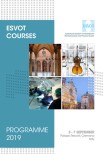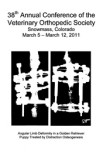OBJECTIVE: To assess technical feasibility and mechanical properties of 3 locking plate designs (Zero-P, Zero-P VA, and Uniplate 2) for use in the canine cervical spine.
STUDY DESIGN: Prospective ex vivo study.
ANIMALS: Cadaver cervical spines from skeletally mature large breed dogs (n = 18).
METHODS: Specimens were screened using radiography and allocated into balanced groups based on bone density. Stiffness of intact C4-C5 vertebral motion units was measured in extension, flexion, and lateral bending using nondestructive 4-point bend testing. Uniplate 2 was then implanted at C4-C5 and mechanical testing was repeated. Mechanical test data were compared against those from 6 spines implanted with monocortical screws, an allograft ring spacer, and PMMA.
RESULTS: The Zero-P and Zero-P VA systems could not be surgically implanted due to anatomical constraints in the vertebral column sizes of the canine cervical spines used in this study. Fixation with Uniplate 2 or with screws/PMMA significantly increased stiffness of the C4-C5 vertebral motion units compared to unaltered specimens (P < .001) in extension. Stiffness of the titanium screw/PMMA fixation was significantly greater than the Uniplate 2 construct in extension. Flexion and lateral bending could not be evaluated in 3 of 6 specimens in the Uniplate 2 group due to failure at the bone/implant interface during extension testing.
CONCLUSION: Fixation with Uniplate 2 was biomechanically inferior to screws/PMMA. Particularly concerning was the incidence of vertebral fracture after several testing cycles. Based on our results, Zero-P, Zero-P VA, and Uniplate 2 cannot be recommended for use in dogs requiring cervical fusion.









